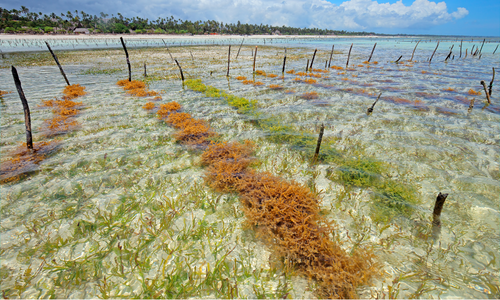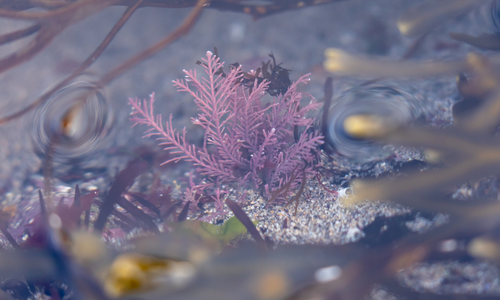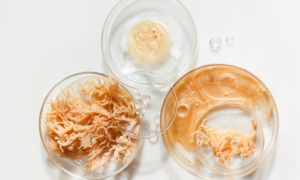Home » Make use of Nature’s Wonderful Powers
Make use of Nature's Wonderful Powers

Sea moss is an edible seaweed that has been used for centuries as a holistic health remedy. It is rich in nutrients and has numerous health benefits, such as providing the body with essential minerals and vitamins and aiding in digestion. Its unique properties make it a valuable addition to any healthy lifestyle.
In this blog post we will talk about what sea moss is. You will receive a detailed explanation about the plant chondrus crispus and where sea moss thrives best.
Introduction: What is Sea Moss?
Chondrus crispus, commonly referred to as Irish moss or carrageen moss. It is a type of red algae found in abundance near the rocky coasts of Europe and North America. It is also known by its Gaelic name, carraigín which means “little rock”. This microscopic organism has a soft, rubbery texture when fresh. Its color varies from yellow-green, to red, and to dark purple or brownish-purple.
Red algae, of which carrageenan is the main component, makes up 55% of its dry weight. There is also 10% protein and 15% mineral matter in it. Additionally, the organism contains a significant amount of iodine and sulfur. Adding water to this substance causes it to give off a scent off the sea. It also has abundant cell wall polysaccharides that make it form a thick jelly-like texture when boiled or soaked in clear water.
This jelly holds up to 100 times its own weight in water. Sea moss can be eaten raw or cooked, added to smoothies or juices, or used as an ingredient in recipes. It can also be taken as a supplement or added to bathwater for a relaxing soak.
Extensive explanation about the chondrus crispus plant
Chondrus crispus is an isomorphic species and has a crustose holdfast with a number of erect, foliose fronds. The size of the holdfast provides bounds on the plant, and there exists a mathematical equation that can be used to link various parameters associated with the fronds to its area. An increase in the area of a holdfast will lead to an increase in the number of fronds as well as their total weight. The amount of weight increase in the fronds is more than that of the holdfast. As the density of fronds decreases, the average weight of them increases proportionately.
Density decreases as a result of frond losses this means that larger plants consist of fewer large fronds and more smaller ones, resulting in a greater portion of the biomass being concentrated in the larger fronds.
While reproductive structures can be found on all sizes of fronds in a plant, it’s the larger ones that are more likely to bear epiphytes and endophytes, which may cause dysfunctions and eventually lead to their loss. Therefore, larger as well as fertile fronds are more vulnerable.

A closer look at the structure of Chondrus crispus shows it has a highly effective morphological setup. This could be the reason why this species is so successful in its natural environment, and is now widely used for commercial purposes.
Where does sea moss thrive
Chondrus crispus, commonly known as Irish moss or carrageen moss, is a species of red algae that is found in the northern Atlantic Ocean and the northern Pacific Ocean. In addition to its presence in these two oceans, it can also be found along the coasts of Europe, North America, South Africa and Australia. Chondrus crispus is typically found growing on rocks and other hard surfaces in the intertidal zone.
It has a wide variety of uses including culinary uses such as thickening sauces and desserts, medicinal uses such as treating digestive problems, and industrial uses such as clarifying liquids or acting as a binder for paints or food products.






